The latest instalment of our Rivers series follows the Esk through some of the Lake District’s most dramatic landscape
Formed in the shadow of England’s highest mountain and tumbling through some of the Lake District’s most dramatic landscape before gently meandering towards the sea at one of the county’s prettiest coastal villages, the Esk is considered to be a river with it all.
Not to be confused with its namesake in North Yorkshire, nor the Border Esk that flows into the north of Cumbria from Scotland – the word ‘esk’ is said to derive from old word for fish so little chance of it being unique as a river name – our Esk is popular for its accessibility.
Accompanied by footpath, bridleway, road or railway for virtually its entire course, it is a river to be enjoyed as it heads down off the high fells and into the picturesque Eskdale valley bottom.
The river flows for around 15.5 miles from just below Esk Hause between Great End and Esk Pike in the Scafells range dropping through a series of falls to Lingcove Bridge. Descending from here marks its first contact with habitation at Brotherilkeld Farm, settled by Norsemen and later belonging to the monks of Furness Abbey, and the remains of Hardknott Castle, the only Roman fort in Britain where the parade ground is still visible. Up to 500 cavalry would have been garrisoned here.
The army’s choice of location for a fort was as majestic as it was formidable, which has been good news for its preservation. The remote site meant there was little alternative need for the stones in future centuries and therefore limited removal for re-use ensuring that the fort’s defences remain impressively high.
The remains of the commandant's house, the headquarters and granary can still be seen, as can the bathhouse outside the fort's walls.
By the 12th century, much of Eskdale was part of the Copeland Forest and used as hunting land, with manors owned by feudal barons. Today, the National Trust owns and manages a number of farms in upper Eskdale, covering around 5,000 hectares.
Drivers and cyclists who have negotiated the spectacular Wrynose then Hardknott Passes from the east descend to the valley bottom here with the road crossing the river for a pit stop at the Woolpack Inn.

From here, it is just a short run to Boot and the grade II* listed Eskdale watermill. Dating back to at least 1578, Eskdale Mill is Whillan Beck and demonstrates 500 years of water power and the traditional craft of corn milling. Complete with original working milling machinery, it is one of the few places in the UK to have double overshot waterwheels, a traditional oats drying rack and ingenious mechanisms made from local wood, metal and stone.
Within walking distance is Dalegarth station and the valley’s best known visitor attraction, the Ravenglass & Eskdale Railway, one of the oldest and longest narrow gauge railways in England. The station has a café, gift shop, information centre and car park and has featured twice on national television recently, on BBC Countryfile and Channel 5’s Big Steam Adventure.

The narrow gauge rail line was opened In 1875 to transport iron ore mined in the hills above the village of Boot to Ravenglass where it was transferred onto the Furness Railway's mainline to Barrow-in-Furness. The railway was opened to passenger traffic in 1876 but falling numbers and diminishing quantities of ore led to its closure in 1913.
Miniature railway engineer and prolific model makers WJ Bassett-Lowke and R Proctor-Mitchell, representing Narrow Gauge Railways Ltd, leased the line as a base for testing their little locomotives under fairly harsh operating conditions in 1915. These engines ran to a smaller gauge of 15 inches and the Ravenglass & Eskdale Railway, affectionately known as La’al Ratty, carried tourists in the summer season and served a new granite quarry.
When the quarry closed in the 1950s, the line was put up for sale and bought at auction in 1960 by the new Ravenglass & Eskdale Railway Society and local businessmen Sir Wavell Wakefield and Colin Gilbert, who formed a new company to run the railway.
Today heritage steam engines transport around 100,000 passengers a year between Dalegarth and Ravenglass at 210ft above sea level. The seven-mile route takes around 40 minutes each way offering spectacular views over the estuaries and countryside from covered, half open and open top carriages. The journey was said to be one of Alfred Wainwright's favourites.
There are numerous footpaths in the area, which is why it is such a popular area for discerning walkers, away from the hustle and bustle of well-known routes. A favourite lower level walk is the Eskdale trail which follows the river from St Catherine’s Church where you can cross the river on stepping stones and cool off in one of the many rock pools; popular choices are Forge Bridge and the bridge below Stanley Ghyll.
The rail line passes through Eskdale Green and those in cars can head north from here for a slight detour to Woodlands Tearoom and Gift Shop, at Santon Bridge. First established in 1954, it supplied the local community and visitors with a range of local products and hot drinks sold from a flask.
The business was later extended to include a tearoom and now offers food, drinks and gifts close to woods at the foot of Wasdale and surrounded by wildlife. It was taken over last year as a first business venture together for mum and daughter Angela and Jessica Anthonisz.
Angela is a skilled baker and Jessica, who has a degree in art, is keen to support local artisans in developing the gift shop.
Back to Eskdale Green, the road follows the Esk beneath Muncaster Castle. One of west Cumbria’s biggest family attractions, it has 77 acres of gardens and woodland, the Hawk and Owl Centre and, most recently, the Weapons Hall, where budding medieval knights can hone their skills.
The Pennington family has evidence of it being their home since 1208 when lands were granted to Alan de Penitone, however, some records go back further suggesting that the family has been there since at least 1026.
The extensive gardens include a 18th Century terrace and subsequent decades saw many sought after and rare and plants brought to Muncaster.
From the castle it is possible to walk the Eskdale Trail through woodland to the Roman bath house at Ravenglass and onto the village itself.

The bath house, said to represent the tallest Roman remains in the north of England, used to stand alongside the long-gone Glannaventa fort. It was supported by a civilian settlement or vicus which would have had cobbled roads full of soldiers, sailors, craftspeople, traders and families since Ravenglass was an important seaport during the Roman occupation. Some of the Roman remains at Ravenglass now form part of the Frontiers of the Roman Empire (Hadrian’s Wall) World Heritage Site.
Ravenglass went on to become a small market town thanks to its position near the estuaries of the rivers Esk, Irt and Mite with their abundance of fish before mining became the focus of commercial activities centred on the railway in the 19th century.
The village is, therefore, full of old seaside cottages dating from the 18th and 19th centuries.
Ravenglass is a terminus for the narrow guage railway and is also a stop on the Cumbrian Coast Line which runs regularly between Barrow-in-Furness and Carlisle.
State-of-the-art facilities to support people with complex access needs were recently installed at the Ravenglass and Eskdale Railway station. Based in a converted building on platform one, the fully accessible changing room and toilet facilities for disabled people were match-funded by the Government’s Changing Places fund via Cumberland Council.
The new Changing Places facilities include a hoist, an adult sized changing bench and space for carers to complement existing disabled parking spaces and level access to the platform. The new facilities can be used by anyone, not just visitors to the railway, the Turntable Café and Ravenglass Railway Museum.
The museum opened in 1978 to hold a collection of artefacts gathered from the centenary of the Ravenglass & Eskdale Railway two years earlier. Initially, the collection was housed in a shelter on the mainline platform but in 2015 funding was secured to redevelop the museum and extend it into a shed that meant locomotives and rolling stock could be displayed as well.
At Ravenglass, the estuary brings the Esk, Irt and Mite together at Eskmeals nature reserve, a Site of Special Scientific Interest (SSSI), over an area of 165.5 acres (67 hectares). The SSSI is made up of mostly coastal dunes and salt marsh attracting breeding birds and flowers.
The Esk has a reputation as a very good fishing river, especially for sea trout and salmon and was made famous by Hugh Falkus whose classic book on sea trout fishing was largely written on its banks.
Alternative activities include Eskdale Golf Course and West Lakes Adventures, based at Boot.
Extending north from Ravenglass, visitors can visit the beaches around Drigg and Seascale, or head south towards Millom, stopping at Waberthwaite to collect some famous Cumberland sausages from RB Woodall.

Things to do along the River Esk in Cumbria
PHOTO OP – Any of the higher walks in the area provide stunning views to capture on camera
PIT STOP – Brook House Inn (West Cumbria Camra Pub of the Year 2023), The Boot Inn, Dalegarth station, Woodlands Tea Room at Santon Bridge, Ravenglass Handmade Ice Cream (soon to be in a new home), The Brown Cow Inn at Waberthwaite
TOP SHOP – Woodlands Gift Shop, Santon Bridge; Dalegarth station; Eskdale Stores; RB Woodall
HOT SPOT – Hardknott Castle, Ravenglass Roman bath house, Eskdale watermill
FAMILY STOP – Ravenglass and Eskdale Railway, Muncaster Castle, Ravenglass Railway Museum
AND FLOP – Eskdale Campsite (National Trust), YHA Eskdale at Boot, Woolpack Inn, Stanley Inn, Muncaster Castle, Pennington Hotel in Ravenglass







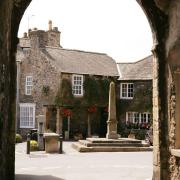




![Hampsfell [visitcumbria.com]](/resources/images/128x89/1x/18466935.jpg)
![Hampsfell [visitcumbria.com]](/resources/images/180x180/1x/18466935.jpg)

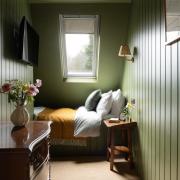

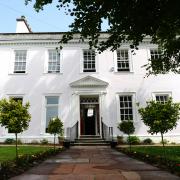

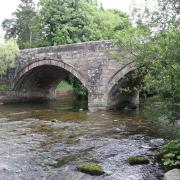

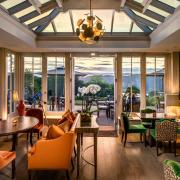

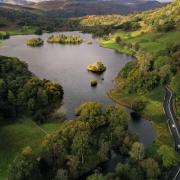

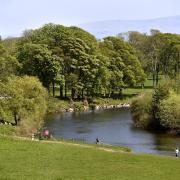

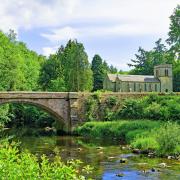
![Kirkby Lonsdale is a popular area for cycling as well as walking [Cumbria Tourism/Carlos Reina]](/resources/images/128x89/1x/18096705.jpg)
![Kirkby Lonsdale is a popular area for cycling as well as walking [Cumbria Tourism/Carlos Reina]](/resources/images/180x180/1x/18096705.jpg)
